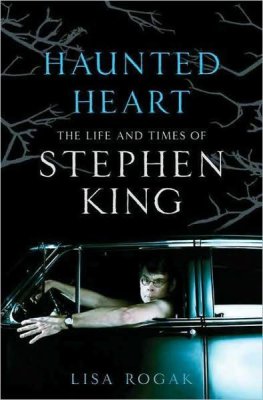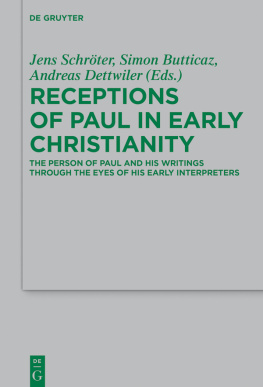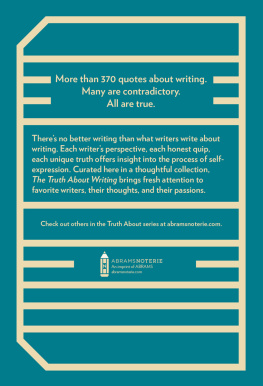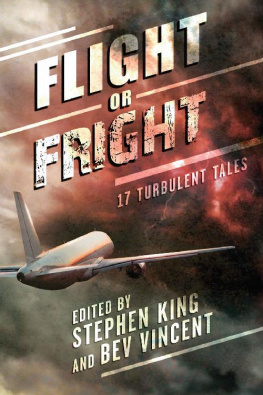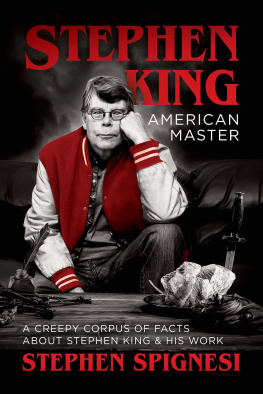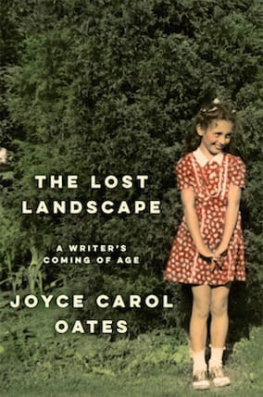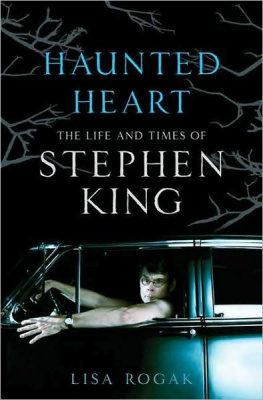first words
Collected and Edited by Paul Mandelbaum

Algonquin Books of Chapel Hill
For Hank and Rachelle

TABLE OF CONTENTS
INTRODUCTION
WHAT WE HAVE HERE,
AND WHAT WE DONT
WHEN HE WAS FOURTEEN, John Updike, having long steeped himself in mystery novels, decided it was time to try his hand at one. He feverishly wrote forty-five pages and in the process created Manuel Citarro, the dashing Spanish sleuth, and his secretary, Thomas Mays, an impetuous and delightfully naive narrator.
As a high school student, Joyce Carol Oates wrote a short story about a young boy longing to go fishing with his older brother, due back from the war. No serene union emerges, however, in this tale brimming with complex family secrets.
Norman Mailer, at the age of ten, was cranking out his action-packed adventure fantasy, The Martian Invasion, in which the hero, Bob Porter, saws through the chains that imprison him, bops Martians on the head, and gleefully practices his French.
Not only did young Updike, Oates, and Mailer write those precocious pieces, but more important, such samples of their juvenilia still exist. Juvenilia, it turns out, have the regrettable tendency to become lost.
Many authors we wrote to in our research for this book replied to say their childhood efforts were no longer available, including Rita Mae Brown, Frank Conroy, Mavis Gallant, John Hawkes, Oscar Hijuelos, Harper Lee, James Alan McPherson, Ann Petry, Scott Spencer, and Robert Stone. Julia Alvarezs were misplaced in some move, as were Sue Millers. Tama Janowitz cited flooding in her mothers basement. A similar fate destroyed Lee Smiths first novel. Written when she was about nine, the work featured my then-favorite people as main charactersAdlai Stevenson and Jane Russell. The plot was that they went West together in a covered wagon, then (inexplicably) became Mormons.
Laurie Colwin responded before her very premature death: My juvenilia has been relegated to what Isaac B. Singer calls the vessel of mercy, known to you and me as the waste paper basket. And Wallace Stegner reported before his death at age eighty-four: Everything I have on hand was written after I was ninety.
Hortense Calisher no longer had the fairy tales she wrote at age seven. Nor could Tom Robbins put his hands on the Snow White and the Seven Dwarfs scrapbook filled with stories that he wrote when he was five and six. The magazines that Lorrie Moore and her brother used to assemble out of notebook paper and ribbon were also irretrievable.
Amy Hempel couldnt locate her bound grade-school volume Mary Climbs the Mountain. Likewise, Elizabeth Tallent had no luck turning up The Postage-Stamp Horse, her first book, a novel set entirely on geranium leaves. The characters spring from leaf to leaf. Crayola illustrations. 3rd grade.
Joy Williamss mother had been doing some pruning in the family archives, and the author was forced to admit that the small shrine of juvenilia she had believed still in existence was no longer. Grace Paley tried in vain to find the ballad she wrote on the kidnapping of the Lindbergh baby, a subject which struck me to the heart when I was about nine.
I wish I had the play I wrote in the fifth grade, set in the first World War, that we put on in the classroom, replied Elmore Leonard, but I dont.
And, prior to his death, James Michener sent his regrets as well: Alas, I have no samples of my own early writing, and thats a shame, because when I was eight or nine I had my first encounter with Homers Iliad, and when, in the final pages of the childs account of those heroic days, I learned that my Trojans had been defeated by a dirty trick perpetrated by the wily Greeks, I became so angry that I sat down, took a blue-covered examination book, and rewrote the ending of the Trojan War. I can assure you that though those pages are lost, in my version Ajax, Achilles and their bully-boys received what for!
A few authors, though able to locate some juvenilia, were unwilling to see them in print. William Kennedy could not be persuaded to share his story Eggs, which he had spoken about so temptingly at a PEN/Faulkner gala. Cynthia Ozicks juvenilia are sealed in a box in her attic labeled DO NOT OPEN UPON PAIN OF DEATH. And William F. Buckley, Jr., exercising similar caution, replied, If I poked back at the stuff I wrote before age twenty-one I would almost certainly be driven to suicide, and I dont think the country could stand that premature loss.
Other potential contributions had been censored by outside parties. Mary Hoods grade-school novel about the westward pioneers was destroyed by one of her teachers, who took one look and cried out, like a hay fever sufferer offered a bouquet of ragweed, Ridiculous! and tossed the whole thing in the trash. I slunk away. I knew what she meant: Kid stuff!
But, as Mary Hoods teacher was not prescient enough to consider, the kid stuff of writers who grow up to achieve eminence can be another matter entirely.
THE VALUE OF JUVENILIA: SOME HISTORICAL AND CONTEMPORARY EXAMPLES
JANE AUSTEN WROTE FAR better as a teenager than most people ever manage as adults. And she undoubtedly knew it. In August of 1792, inscribing her latest fictional creation to Cassandra, her adored sister, the sixteen-year-old author wrote playfully:
Madam, Encouraged by your warm patronage of The Beautiful Cassandra and The History of England, which, through your generous support, have obtained a place in every library in the kingdom, and run through threescore editions, I take the liberty of begging the same exertions in favour of the following novel, which, I humbly flatter myself, possesses merit beyond any already published, or any that will ever in future appear, except such as may proceed from the pen of your most grateful humble servant, the Author.
Contrary to Austens jest, many others have written novels of greater merit than the one in question, Catharine. Still, Penguin Classics saw fit in 1986 to include it with much of the rest of Austens 90,000 words of existing juveniliaand a large portion of Charlotte Bronts as wellin its august series, alongside Homers Iliad and Boccaccios Decameron.
This act of canonization helped promote not only juvenilias entertainment value but also its literary significance. Childhood writing often indicates an authors bent, demonstrating that each great novel is a chapter in a lifelong body of work. At surprisingly early ages, authors can establish a creative agenda: a theme, or a plot, or a voicesometimes subtle, sometimes not, but likely all the same to assert itself over and over again. Retracing an authors steps back into childhood illuminates the creative process behind the adult work.
In the Penguin Classics edition of Austen and Bront, for example, editor Frances Beer notes the emergence of Austens trademark moral criticism as it mingles with the youngsters earlier taste for pure ridiculea taste that (fortunately) she never outgrew. Other scholars have also found Austens juvenilia useful in charting her development. Persuasion, notes Donald Stone, has been commonly thought to mark a new romantic element in Austen; and yet we see in Catharine that it was there from the very beginning.
Like Austen, F. Scott Fitzgerald left some traceable literary fingerprints in adolescence. For example, two short pieces from his prep school days, A Luckless Santa Claus and The Trail of the Duke, both feature hapless men playing the fool for frivolous women. In light of Fitzgeralds juvenilia, Daisys appearance in


